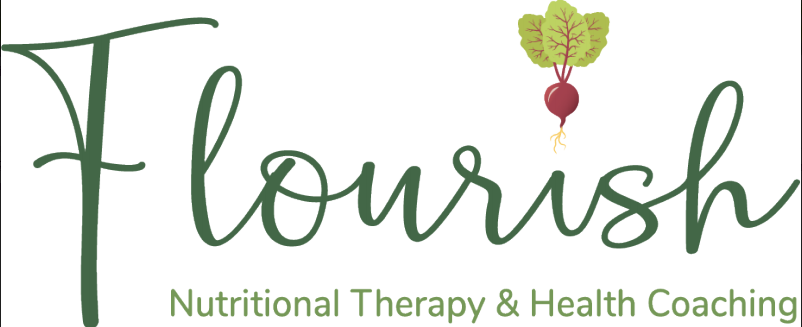Having a teacher suggest your child may have ADD/ADHD – That thought can be scary.
Many parents are at their wits’ end trying to figure out how to help their child pay attention, calm down, listen to the rules and get better grades. A teacher, family member, or friend may have suggested that your child needs to be tested for ADD/ADHD. That thought can be scary and you are probably unsure if you want to have your child labeled with ADD/ADHD. Some of you may be asking what are the symptoms of ADD/ADHD.
ADD/ADHD is a neurodevelopmental disorder with these common symptoms:
- Poor focus or inattention
- Difficulty completing tasks
- Overlooks details
- Difficulty organizing or is messy
- Poor grades
- Impulsivity/Hyperactivity
- Fidgets
- Talks excessively
- Has difficulty waiting their turn
- Interrupts others
- Uncomfortable being still
- Restless
Does your child fit into some of those categories? If so, you are probably wondering what you can do about it. There are many types of medications out there, however parents like you, want something different. They want answers as to why their child has these problems. They want to know how to fix it, not just slap a band-aid on the problem. Getting to the root cause of the symptoms is much more effective in the long term.
Let’s explore some of the reason why children and adults struggle with ADD/ADHD
Nutrient deficiencies including iron, magnesium, vitamin D, and zinc.
Nutritional deficiencies can be due to factors such as poor dietary habits, overconsumption of nutrient-depleted foods, food sensitivity, and/or improper digestion and absorption.
Food should always be the first step in replacing nutrients, instead of starting with supplements. Begin by adding nutrient-dense foods into the diet. Trade boxed and bagged food for fresh options. Shopping at the outer perimeter of the grocery store is the best strategy to avoid junk food. Of course, some healthier options will be more appealing than others. I can hear you now, “how am I going to get my child to eat that?” Believe it or not, children are actually better than adults at trying new foods. Tell them to try one bite of everything on their plate. You never know what they may love.
I always tell children, and adults, to eat a rainbow of colors every day. Purple, blue, green, yellow, orange, and red. Have your child pick food from each of these colors, every day. You can even make it a competition where the person who eats the most colorful food gets a prize.
It is also important to have a variety of foods rich in nutrients commonly found as deficiencies in children with ADD/ADHD.
Foods rich in zinc:
- Red Meat
- Shellfish (oysters,crab,shrimp,mussels)
- Legumes (chickpeas,lentils,beans)
- Seeds (hemp, pumpkin, sesame)
- Nuts (cashews,almonds, walnuts)
- Eggs
- Whole Grains (quinoa,rice, oats)
- Dairy (milk and cheese)
- Dark Chocolate
Foods rich in vitamin D: Sunshine is the best way to get a dose of vitamin D. If it is difficult to get a little sunshine, here are a few foods that contain vitamin D:
- Salmon
- Herring
- Sardines
- Cod Liver Oil
- Canned Tuna
- Egg Yolks
- Mushrooms
- Cow’s Milk
- Soy Milk
- Orange Juice
- Oatmeal
Foods rich in magnesium:
- Avocados
- Leafy Vegetables (spinach, kale, swiss chard)
- Cashews
- Tuna Fish
- Flaxseeds
- Pumpkin Seeds
- Legumes
- Dark Chocolate
- Tofu
- Whole Grains
- Fatty Fish
- Bananas
- Almonds
- Sesame Seeds
Foods rich in iron:
- Beef or Chicken Liver
- Clams
- Mussels
- Beef
- Poultry
- Sardines
- Fish
- Lentils and other Legumes
- Dark Green Leafy Vegetables
- Dried Apricots
Cooking in cast iron cookware is another way to get a small amount of additional iron
Need a little extra help, request one of my Child-Friendly Food Plans and recipes to get you started:
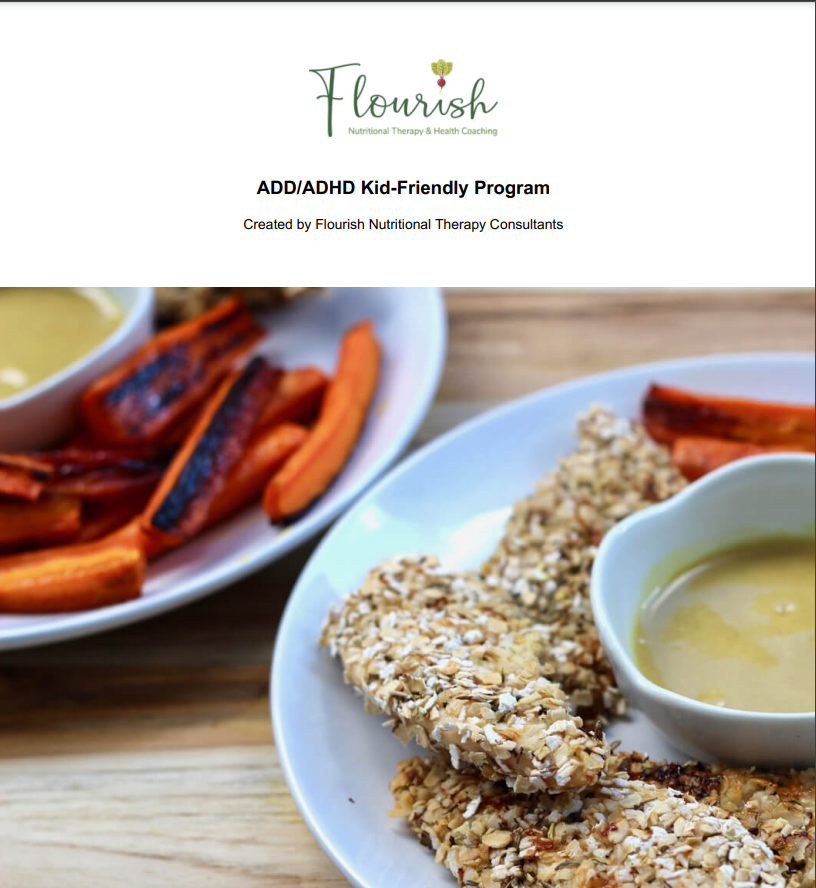
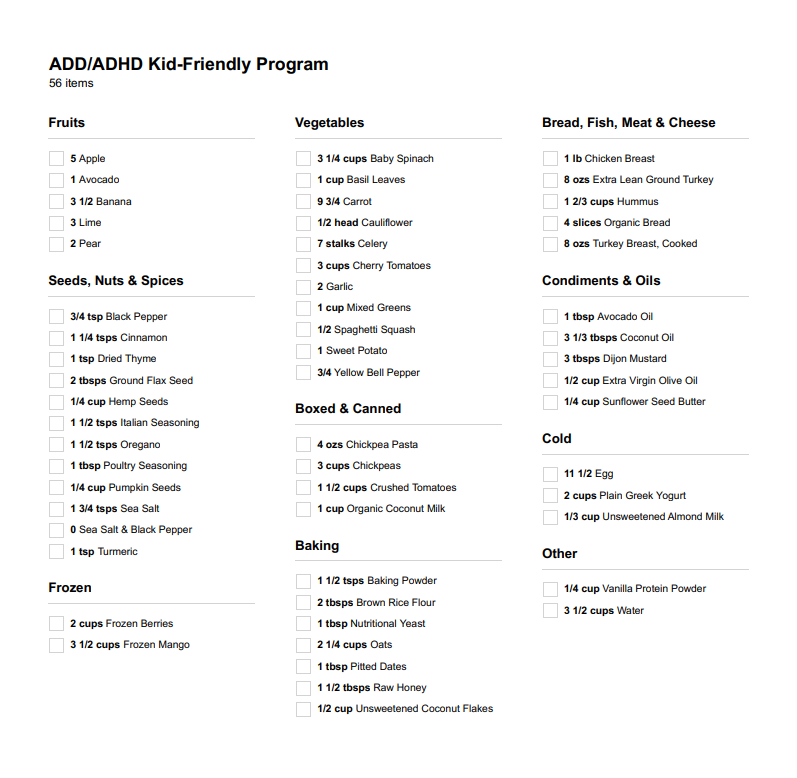
Food Sensitivities
Many children that I see struggle with food sensitivities and/or mild food allergies. As you can see from the list above, foods high in nutrients needed to prevent ADD/ADHD symptoms can also cause sensitivity or allergy. My favorite way to explore whether a child has food sensitives is to take the most common allergens out of the diet for 30 days, then slowly reintroduce one at a time. Request a full PDF copy of The Elimination Diet.
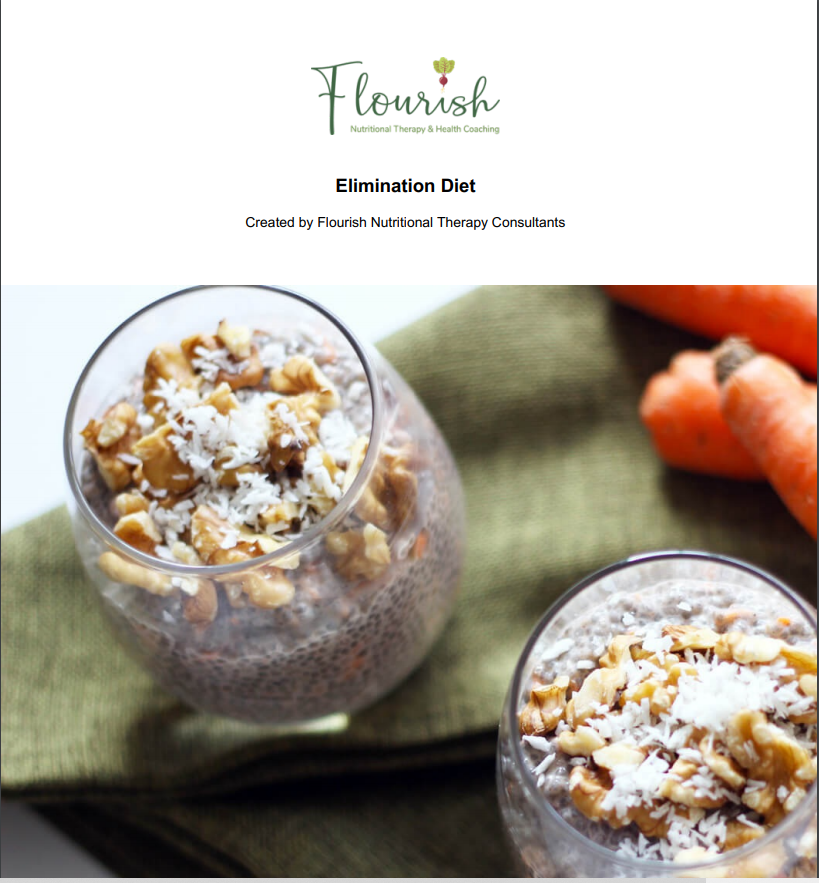
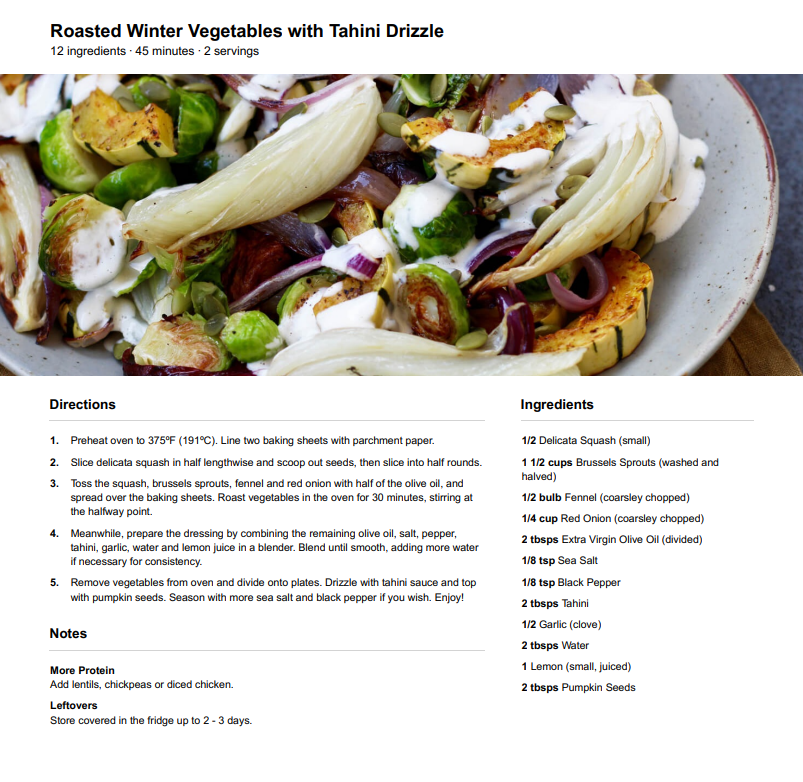
The foods to remove from your child’s diet include:
- Refined sugar (cane sugar, cookies, candy, cakes, etc.)
- Eggs
- Dairy (milk, cheese, sour cream, yogurt)
- Wheat (bread, cookies, tortillas, cereals, bagels)
- Corn (chips, tortillas)
- Soy (tofu, soy sauce, tempeh, milk, miso)
- Chocolate
I also recommend avoiding foods that contain chemicals, additives, and preservatives including caffeine, dyes (red and yellow specifically), and pesticides. If eating completely organic is not possible, review the Clean Fifteen and Dirty Dozen list on ewg.org. Try to purchase the Dirty Dozen list organic whenever possible. Currently, the list includes strawberries, spinach, kale, nectarines, apples, grapes, peaches, cherries, pears, tomatoes, celery, and potatoes. Local farmer’s markets are a great source of organic produce and a great family outing.
During the elimination phase, it is important to observe the child during the 30 days to see if you notice any improvements in symptoms
For example, they may be less impulsive, calmer, complete tasks with less struggle, or have better grades. At the end of the 30 days, start adding back one food at a time, in its purest form. For example, most people choose to try eggs first, as it allows much more variety in meal prep and cooking. On day 31, add eggs back 1-2 times that day, then avoid for the next three days. During this time frame, observe a decline in any symptom that improved over the 30-day elimination period. If there is no reaction, keep eggs in the diet and try another food. If your child seems to be sensitive to multiple foods, it is important to have an evaluation with someone trained in gut health and food sensitivities, to develop a plan for healing. You can find some information regarding gut health on my website Flourish Nutritional Therapy.
Improper digestion and absorption:
One more thing to consider. Children who have had repeated antibiotics due to ear infections, strep throat, and other childhood illnesses and children born by c-section have been linked to having an increased risk for ADD/ADHD. It is important to make sure that your child is digesting and absorbing foods adequately. Ask your child if they have a bowel movement every day. If your child complains of stomach pain, does not have at least one bowel movement per day, or has diarrhea, add probiotic foods including fermented vegetables, kefir, kombucha, and yogurt into the diet. It is also important to include prebiotic foods.
Also known as food for the good bacteria:
- Onions
- Garlic
- Asparagus
- Bananas
- Oats
- Apples
- Flax Seeds
- Leeks
- Jerusalem Artichoke
- Dandelion Greens
- Jimica
I hope these tips will help your child lessen ADD/ ADHD symptoms. If your child still struggles with ADD/ADHD, constipation, diarrhea, or stomach pain after the addition of pre and probiotics and dietary changes, it is time to have an evaluation with a qualified professional who can dig a little deeper and explore other possible contributing factors such as vitamin deficiencies, methylation/detox genetics, exposure to environmental toxins, allergens and sensitivities.
Thank You Heather for this wonderfully informative article. For more information or to receive any of the helpful PDF’s mentioned in this article please contact:
Heather Hanson FNTP, CFMHC, SFN, CFT, RMA
Nutritional Therapy Practitioner, Holistic Nutritional Counseling
Flourishnutritionaltherapy.com
Heather.flourishnutrition@gmail.com
